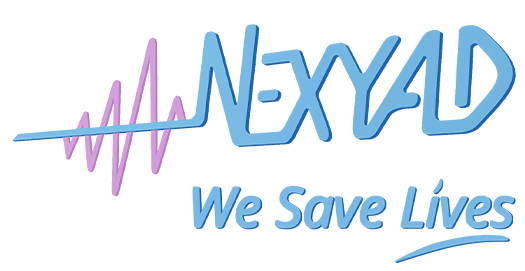Thanks to Business France for having organised this CES mission and to Moveo sponsoring.
The show is bigger than everybody says us before. There is thousands of boothes in several places in Las Vegas. It is impossible to see all in four days long. This year, French Tech was well represented in the Venetian Hotel and at the Convention Center near the Westgate Hotel. In the last news we talked about Leddartech and today we make a focus on three major companies that built the future of smart mobility.
New ADAS demos by VALEO
Valeo onboard demos area at Golden Lot was completely crowed during the four days of the Convention. But we were lucky happy few to test Valeo XtraVue and Valeo 360AEB Nearshield.
Valeo XtraVue is a system based on a set of connected cameras that eliminates visual obstacles. It takes two vehicles equipped with the system. The driver of the vehicle B, which follows the vehicle A, can see on its control screen what happens in front of the vehicle A by seeing through it.
Valeo 360AEB Nearshield (Autonomous Emergency Braking) is an innovative technology to protect nearby pedestrians when vehicles perform low-speed maneuvers. With a full 360 degrees system of cameras and ultrasonic sensors, this ADAS helps the driver to avoid accident due to blind spots around large vehicles such as SUV and pick-up trucks.
Read more about Valeo at CES
HERE Indoor Positioning brings precision to the industrial IoT.
The NEXYAD team present in Las Vegas was invited by officials on the HERE booth at Convention Center Central Plazza.
When we entered the booth, we saw a table with mini robotic forklifts in a warehouse, all built with real technology. The robots moved around a simulated environment picking up and delivering containers based on high-accuracy positioning, bringing the real-world applications to life.
It was one of the numerous technologies presented by HERE at CES this year.
More about HERE here

VALEO XtraVue demo car HERE Indoor Positionning demo
Visteon Demonstrates Augmented Reality Driving Experience and Latest Head-Up Display Technology at CES® 2017.
Complementing the vehicle’s HUD, embedded front-view and driver monitoring cameras trigger “smart alerts” in the form of lights and sounds when the driver is not paying attention to the road, if the vehicle strays from its lane, or if the vehicle is at risk of potentially hitting an object. For example, when a pedestrian or bicycle is present on the side of the road, an LED light projects onto the windshield within a 90-degree angle of the driver’s line of sight, giving a visual alert without the driver needing to turn his or her head.
Read more about Visteon here
 Two onboard cameras look at the front of the car (a video for the demo),
Two onboard cameras look at the front of the car (a video for the demo),
detect obstacles and alerts the driver via a HUD.



 from the left Marie-Amélie Fenoll, Edwin Collela and Gérard Yahiaoui
from the left Marie-Amélie Fenoll, Edwin Collela and Gérard Yahiaoui

















